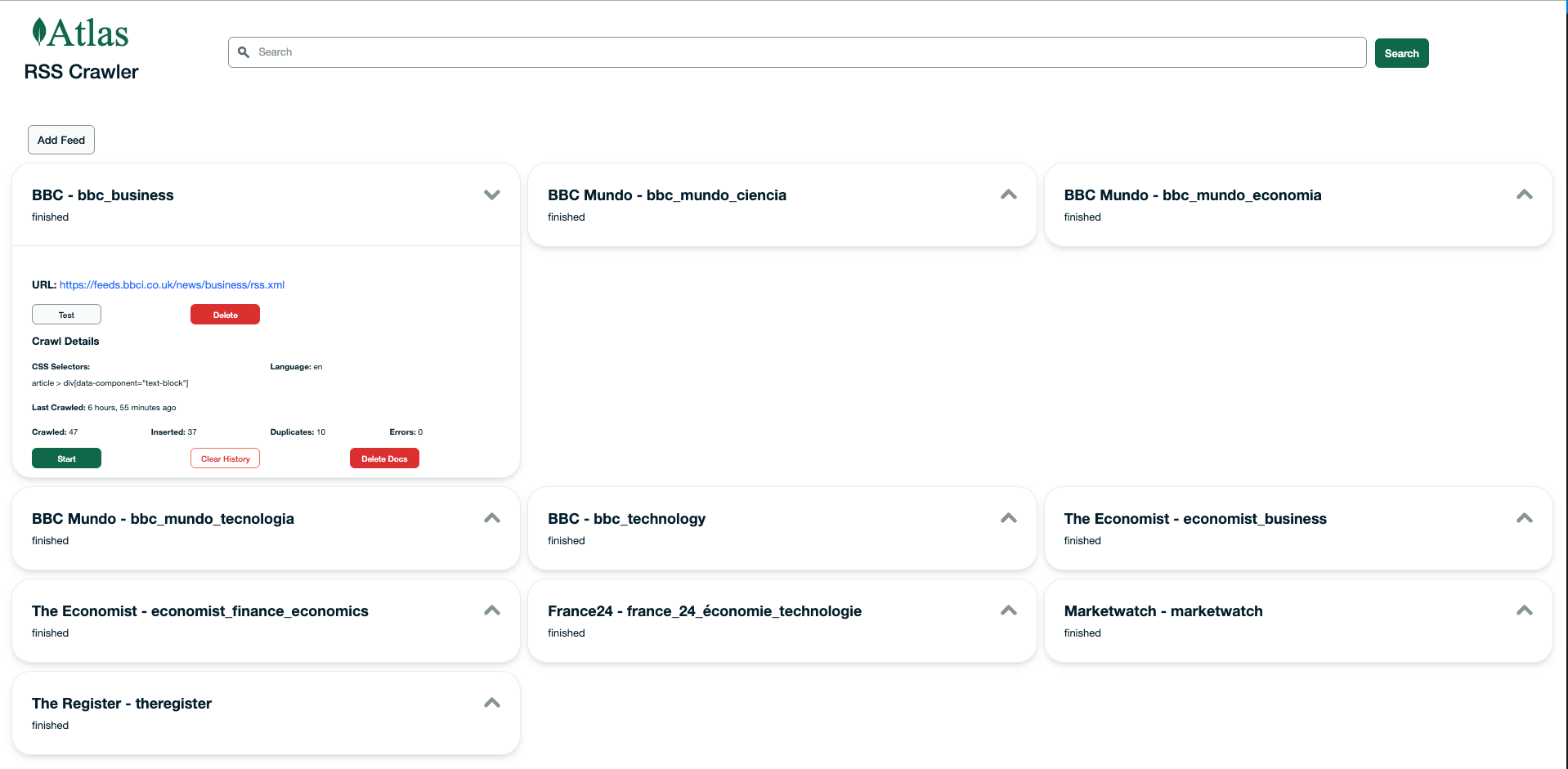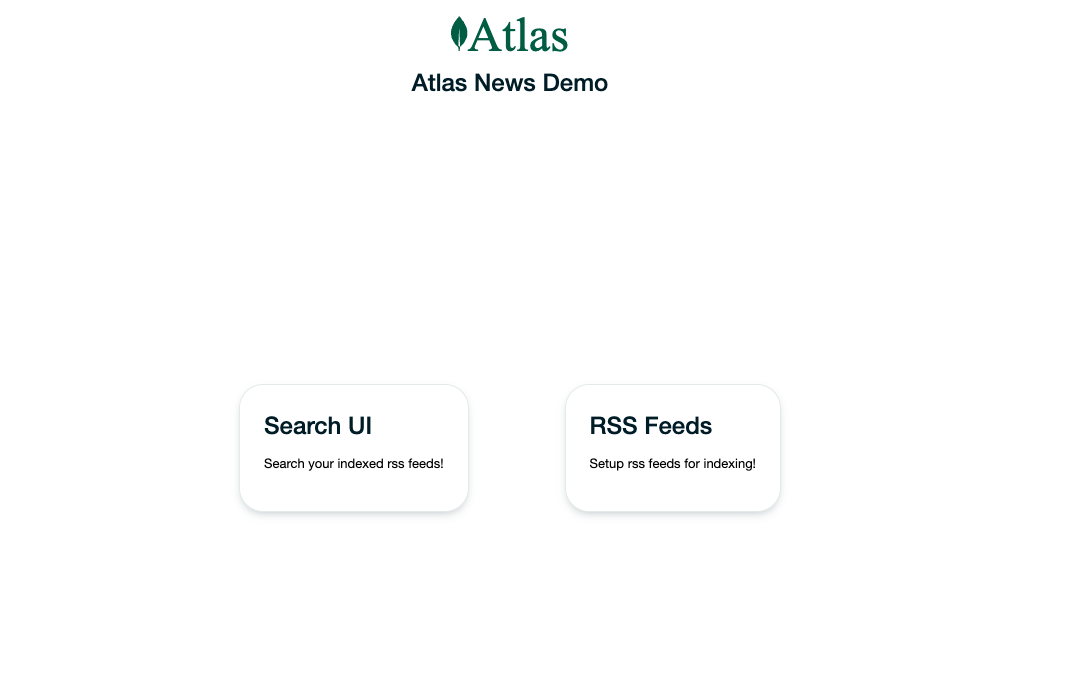This is an application that allows you to crawl and index RSS feeds into MongoDB Atlas!
First you will need to set your database connection string and optional database name (defaults to 'news-demo') in .env. There is an example of how to name your variables in example.env. Also add API keys for the embedding service.
MDBCONNSTR -- Connection string for your Atlas Cluster
MDB_DB -- MongoDB database to install to (defaults to 'news-demo')
VECTOR_SERVICE_URL -- If you are using a self-hosted embedding service
OPENAIDEPLOYMENT -- Model deployment if using Azure OpenAI
OPENAIENDPOINT -- Endpoint if using Azure OpenAI deployment
EMEBDDING_API_KEY - API key for embedding provider
PROVIDER -- Embedding provider: openai | azure_openai | vectorservice | mistral | fireworks | nomic
EMBEDDING_DIMENSIONS - Size of dimensions to use. Depends on the embedding provider and model.
EMBEDDING_MODEL - name of an embedding model to use (if your provider supports this)
Optional:
API_URL -- Specify base url for backend APIs, useful for kubernetes deployments. Defaults to 'http://127.0.0.1:3010' if not set.
After that you can either install everything to a local environment or use docker.
Once everything is running you can access the frontend at http://localhost:3000/
Note that by default the RSS feeds in feeds.py will be installed into your Atlas Cluster. If you don't want these or want to start with different feeds then you must modify that file.
You will be able to managed your feeds from the feeds page: 
And perform searches from the search page: 
./runLocal.sh
Runs the npm build and start commands.
./runDocker.sh
This pulls the latest image hosted at johnunderwood197/newssearch and runs it locally in a container. This uses docker pull which should automatically pull the correct image for your architecture (amd64 or arm64).
./buildRunDockerLocal.sh
Will build a docker image and then run it in a local container.
./buildAndPush.sh
This creates multi-arch images (linux/amd64 and linux/arm64) and pushes them to a repo of your choice. Due to some architecture-dependant binaries this project makes use of docker's ability to build for multiple architectures.
The application uses a few very cool packages to read an RSS feed, open the reference web pages, and parse the html. I am very grateful to (amongst a host of other amazing projects you can find listed here, here and here):
The app is split into a backend and frontend. The backend is written in python and provides a processor which reads a queue of crawl tasks as well as flask API to handle requests.
The data layer for the app is MongoDB Atlas. Configurations for the RSS feeds to crawl are stored in a 'feeds' collection. When an API request to start a feed crawl is received a new task is created in the 'queue' collection. The processor polls this collection every second and when a new task is detected it reads the configuration and starts a crawl process.
During the crawl the target RSS feed url is access and all items in the feed parsed. Each item has a link to a web page which is then opened by the crawler script and the contents parse to extract more data. All this data for each RSS item is then indexed as separate documents in the 'docs' collection. Finally, the status of the crawl is saved as log in the 'logs' collection. In the feeds collection the current crawl log is always saved on the originating feed configuration under the 'crawl' field.
Yes! The stop API creates a stop task with the PID for the running crawl (which is saved in the orignation feed config). This PID is used to stop the appropriate crawl process.
Yes. The processor script uses multiprocessing to spawn a new process for each task.
